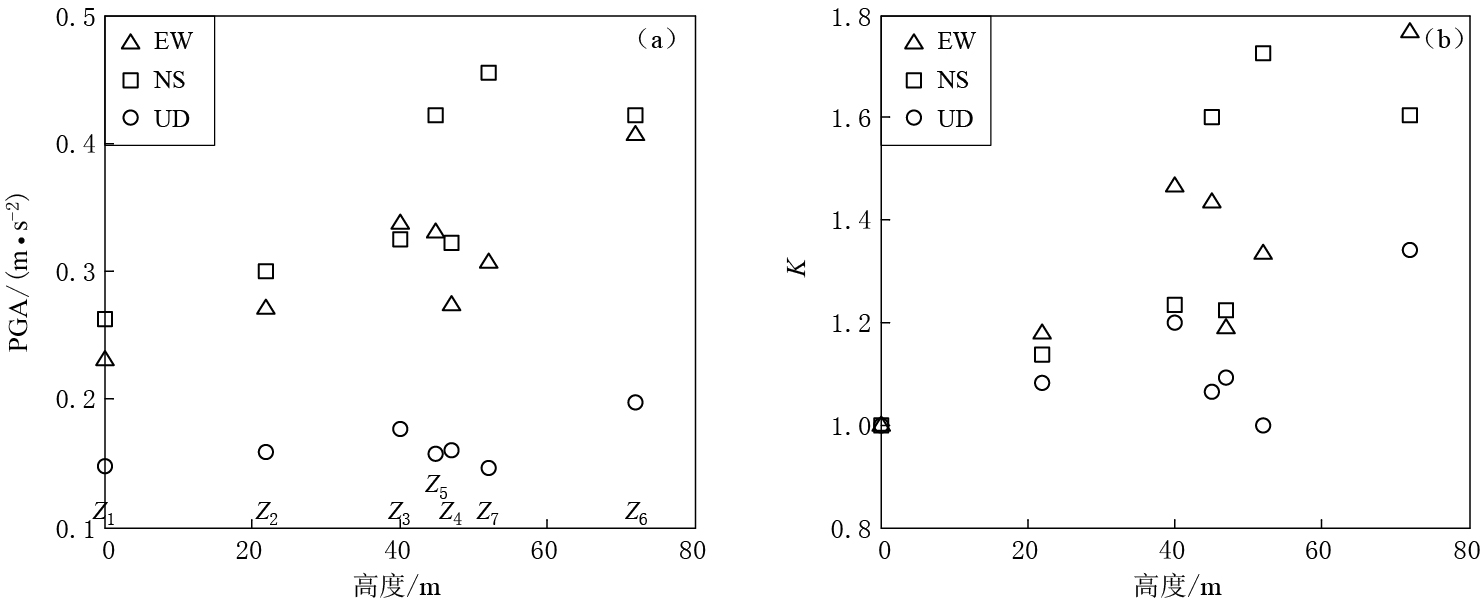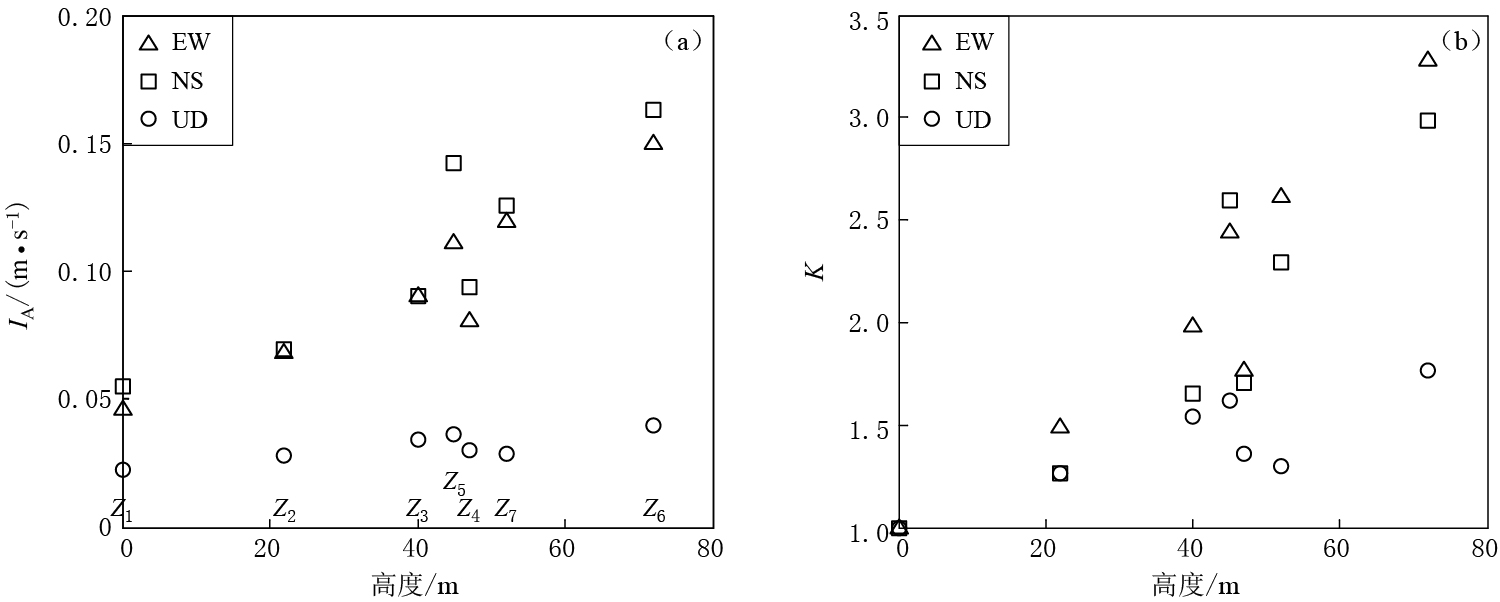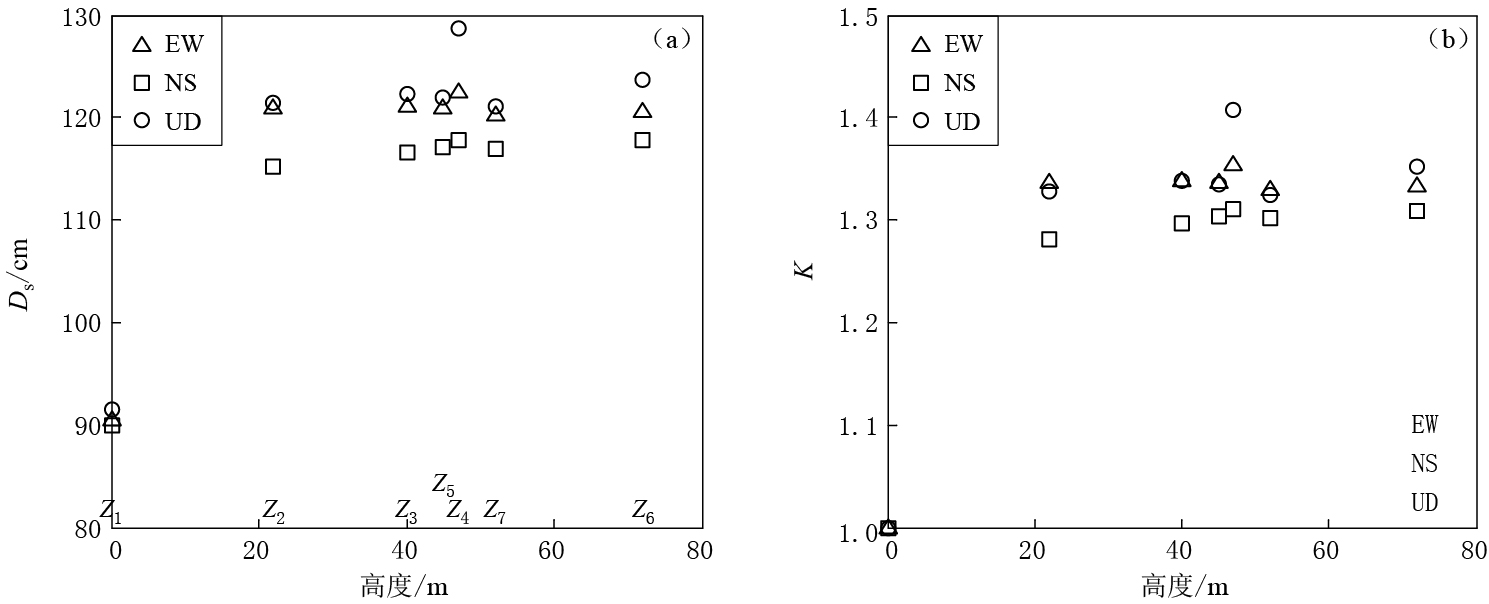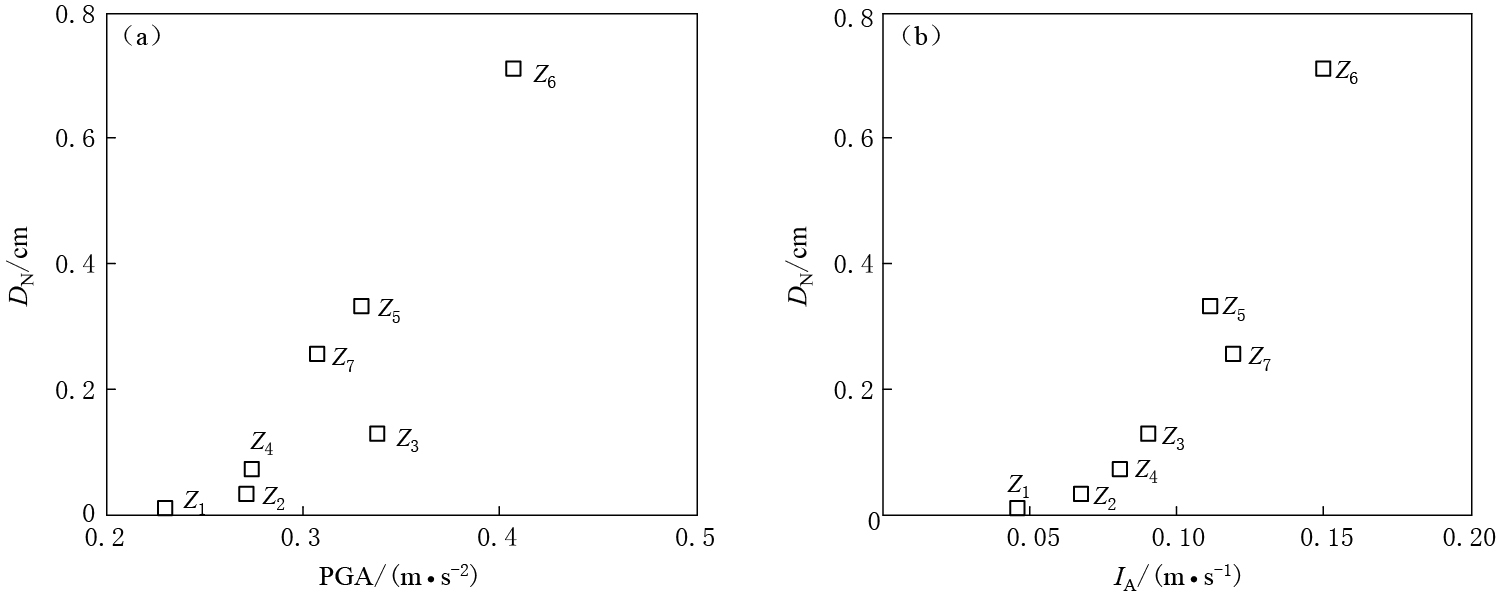On the correlation of ground motion parameters with slope stability incorporating topographic effects
-
摘要: 地形对地震动的影响比较复杂, 考虑地形放大效应的地震滑坡稳定性分析需要选择合适的地震动参数. 本文使用自贡地形影响台阵记录到的2008年汶川MS8.0地震主震加速度记录, 分析了地震动峰值加速度、 阿里亚斯烈度以及90%能量持时随地形高度的变化, 探讨了地形效应作用下峰值加速度和阿里亚斯烈度与地震动作用下斜坡稳定性的相关性. 结果表明: ① 地形场地对峰值加速度和阿里亚斯烈度均有显著的放大效应. 地形放大效应较为复杂, 其整体上随台站高度的增加而增大, 水平向的放大效应大于竖直向. 水平向峰值加速度的放大系数为1.1—1.8, 阿里亚斯烈度的放大系数为1.2—3.3; 竖直向相应放大系数分别为1.1—1.3和1.2—1.7. ② 地形对地震动持时也有一定的放大效应, 但不同高度、 不同分量的放大效应没有显著差异, 其放大系数均约为1.3. ③ 阿里亚斯烈度和峰值加速度均能很好地表征地形对地震动的影响, 与地震动对斜坡稳定性的影响具有很强的相关性. 与峰值加速度相比, 阿里亚斯烈度综合了地震动的多方面特征, 可以更好地表征地形对地震动的影响, 与地震动作用下斜坡稳定性的相关性更强.Abstract: Topography has complex effects on ground motions. In assessing seismic landslide stability, the proper ground motion parameters are needed considering the topographic effects on slope stability. Based on the strong ground motion accelerations of the main shock of Wenchuan MS8.0 earthquake recorded by the Zigong topographic array, we analyzed the variation of peak ground acceleration (PGA), Arias intensity and 95% significant duration against the terrain’s height, and discussed the correlation betweem the stability of slope during an earthquake and PAG/Arias intensity, with the topographic effect being taken into consideration. The following results are concluded. ① The amplification effect of topography on PGA and Arias intensity are both obvious. The amplification effect becomes generally stronger with the height of the terrain increasing, and the amplification effect is more obvious on horizontal ground motions than on the vertical component. For the horizontal ground motions, the amplification factors are between 1.1 and 1.8 for PGAs and between 1.2 and 3.3 for Arias intensity; the amplification coefficient are in the range from 1.1 to 1.3 and 1.2 to 1.7 for the vertical PGAs and Arias intensity, respectively. The discrepant amplification effect on PAG and Arias intensity shows the influence of topographic effects on strong motion is quite complex. ② The topography can also amplify the duration of strong ground motions, but there is slight difference in the amplification effect among records from different heights and for different components, with the amplification factors all being about 1.3. ③ Both Arias intensity and PGA can reflect the effects of topography on ground motions, and have strong correlations with the stability of slope. Compared with PGA, Arias intensity contains more information of the ground motions, and has a better capacity to capture the effects of topography on ground motions and on the potential seismic landslides hazard.
-
-
图 1 自贡地形影响台阵的台站位置剖面 示意图(引自王海云和谢礼立,2010)
Figure 1. Schematic illustration of the stations location of Zigong topography array (after Wang and Xie,2010)
表 1 各台站地震动峰值加速度、 阿里亚斯烈度IA及90%地震动能量持时Ds一览表
Table 1 Measured PGA,Arias intensity (IA),Dobry duration (Ds) for the seven stations
台站 IA/(m·s-1) PGA/(m·s-2) Ds/s EW NS UD EW NS UD EW NS UD Z1 0.046 0.055 0.022 0.225 0.265 0.147 90.46 89.89 91.46 Z2 0.068 0.069 0.028 0.274 0.304 0.157 120.85 115.22 121.50 Z3 0.090 0.090 0.034 0.333 0.323 0.176 121.09 116.59 122.36 Z4 0.081 0.093 0.030 0.274 0.323 0.157 122.46 117.75 128.78 Z5 0.111 0.142 0.036 0.333 0.421 0.157 120.88 117.15 122.03 Z6 0.150 0.163 0.039 0.412 0.421 0.196 120.62 117.72 123.71 Z7 0.119 0.125 0.029 0.304 0.451 0.147 120.30 117.01 121.16 表 2 各台站EW和NS分量的Newmark累积位移(DN)
Table 2 Measured Newmark’s cumulative displacements DN of EW and NS components at the stations
台站 EW分量DN/cm NS分量DN/cm Z1 0.01 0.05 Z2 0.03 0.16 Z3 0.13 0.30 Z4 0.07 0.32 Z5 0.33 0.88 Z6 0.71 1.07 Z7 0.26 0.59 -
-
期刊类型引用(9)
1. 李孝波,王天虎,王怀强,柳耀阔,席书衡,赵扬. 北川沈家包斜坡场地地震效应研究. 振动与冲击. 2025(08): 241-250 .  百度学术
百度学术
2. 王者,刘云华. 贝叶斯反演:震源参数反演研究的重要方法与挑战. 地球物理学进展. 2024(05): 1771-1787 .  百度学术
百度学术
3. 陈帅,苗则朗,吴立新. 基于修正岩土体强度参数的简化纽马克位移法地震滑坡危险性快速评估技术. 地震学报. 2022(03): 512-527 .  本站查看
本站查看
4. 郝明辉,张郁山,赵凤新. 坡地地形对地震动特性的影响分析. 震灾防御技术. 2021(02): 229-236 .  百度学术
百度学术
5. 唐世雄,邓广辉,刘衡秋. 斜坡抗震稳定性分析中拟静力法的应用研究. 城市地质. 2020(02): 181-186 .  百度学术
百度学术
6. 卢育霞,王良,魏来,刘琨,车高凤,李少华. 利用场地表征参数研究岷漳地区地震动相对变化趋势. 防灾减灾工程学报. 2018(02): 359-366 .  百度学术
百度学术
7. 张海,史晨阳,尤红兵,苏振飞,季新星. 地形效应对于核电场地地震反应分析影响研究. 世界地震工程. 2018(03): 12-22 .  百度学术
百度学术
8. 韩娜娜,单新建,宋小刚. 高空间分辨率数字高程模型测量技术及其在活断层研究中的应用. 地震学报. 2017(03): 436-450+452 .  本站查看
本站查看
9. 卢育霞,刘琨,王良,魏来,李少华. 基于台阵记录的土层山体场地效应分析. 地震学报. 2017(06): 941-954 .  本站查看
本站查看
其他类型引用(8)




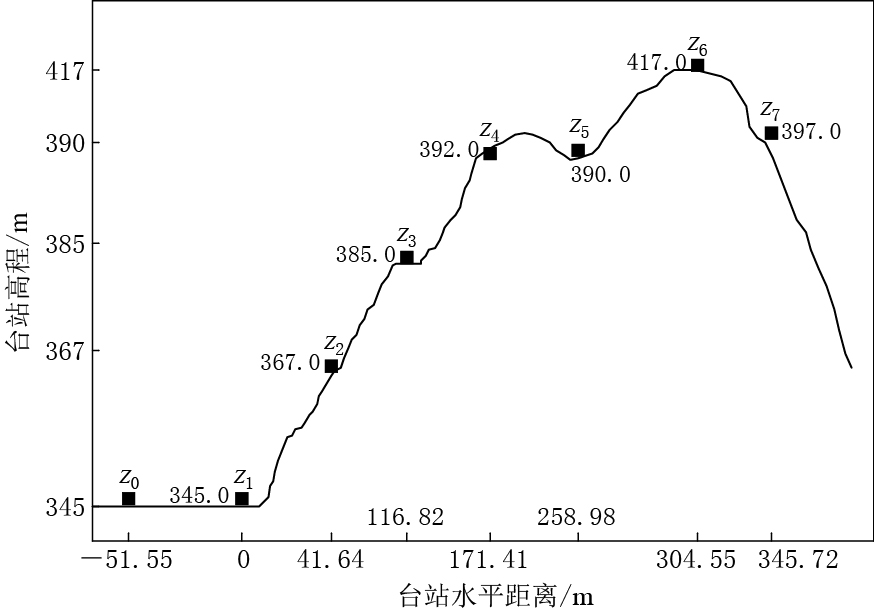
 下载:
下载:
